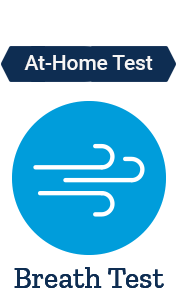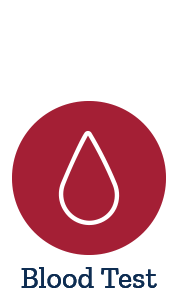GI 360 Stool Analysis Fecal Test
Item # LC100088
Ultimate stool test for dysbiosis, pathogens, & digestion
GI 360 Stool Analysis Fecal Test
Item # LC100088
Ultimate stool test for dysbiosis, pathogens, & digestion
The GI360™ Profile provides in-depth insight into microbiome diversity, dysbiosis, and markers of intestinal health, with easy at-a-glance visual interpretation of results.
Introducing the GI360™ Profile: an innovative, comprehensive and clinically applicable stool profile--the most comprehensive digestive health test Life Extension has ever offered!
Research demonstrates a connection between microbiome diversity and optimal whole-body health. The GI360™ Profile uniquely provides insight into microbiome diversity and dysbiosis, with easy at-a-glance visual interpretation of results. It also gives in-depth data on gut health in the areas of digestion/absorption, pathogens, inflammation, immune response, intestinal health, toxin excretion, and more.
Gastrointestinal complaints are very common in the general population. And yet, most people don’t know that any impairment in GI function or the mucosal barrier is serious and may lead to the development of food allergies, systemic illnesses, autoimmune disease, toxic overload and more. Even for those without GI complaints, the GI360 provides unmatched insight into gastrointestinal microbiome and chemistry.
The markers of this panel are grouped into the following categories:
- H. Pylori Stool Antigen – NEW! Heliobacter pylori is a bacterial species that can be found on the stomach mucosa and is a common cause of various symptoms like gastritis, gastric ulcers and other gastrointestinal health concerns. This FDA-cleared, non-invasive test measures the H. Pylori antigen in stool, checking for presence of this harmful bacterium.
Microbiome Abundance and Diversity
- Bacterial abundance - Analysis of the abundance and diversity of the 6 main phyla of commensal bacterial populations in the microbiome. This assay is performed using PCR technique which identifies gut microbiota using their unique DNA fingerprint.
- Dysbiosis Index (DI) - a calculation with scores from 1 to 5 based on the overall bacterial abundance and profile within a sample as compared to a reference population. Values above 2 indicate a microbiota profile that differs from the defined normobiotic reference population (i.e., dysbiosis). The higher the DI above 2, the more the sample is considered to deviate from normobiosis.
- Diversity Score - The Diversity Index provides a simple at-a-glance reflection of the measurement of the number of bacterial species that live in the gut and the abundance of each type.
- Functional Markers - The following functional markers will appear on the front summary page and will appear as “Expected” or “Imbalanced” based on presence of key bacterial species:
- Butyrate producing bacteria (Eubacterium hallii, Eubacterium rectale, Faecalibacterium prausnitzii)
- Gut barrier protective bacteria (Faecalibacterium prausnitzii, Akkermansia muciniphila)
- Gut intestinal health marker (Faecalibacterium prausnitzii)
- Pro-inflammatory bacteria (Proteobacteria, Shigella spp. & Escherichia spp.)
- Gut barrier protective bacteria vs. opportunistic bacteria (Faecalibacterium prausnitzii vs. Ruminococcus gnavus, Proteobacteria, Shigella spp. & Escherichia spp.)
Microbiology
- Bacterial and yeast culture of live organisms using advanced techniques to culture out aerobic, anaerobic, and microaerophilic bacteria as well as yeast., the GI360 can identify at least 170 species of yeast, 80 species of candida, and over 1400 species of bacteria. If found, yeast and clinically relevant bacteria are reported.
Antimicrobial susceptibility
- Prescription medications and natural agents are tested against selected pathogenic bacterial and fungal species to identify their sensitivity to medications and natural ingredients as well as resistance to those agents.
Please note, susceptibility testing is performed for most pathogenic or dysbiotic species; however, occasionally, susceptibility testing is not performed due to certain species’ unique growth requirements (such as a no oxygen environments) or self-limiting nature.
GI Pathogens (Multiplex PCR)
Using advanced PCR technology for pathogen identification at a genetic level, this portion of the panel identifies 14 of the most common and problematic gastrointestinal viruses, parasites and bacteria. The panel includes norovirus, which is the leading cause of foodborne illness in the US. PCR testing is highly sensitive and accurate and helps expedite clinical decisions, especially for diarrheal illnesses.
The following bacteria, parasites, and viruses are identified using PCR Multiplex Technology
Bacteria
- Campylobacter (C. jejuni, C. coli and C. lari)
- Clostridium difficile (toxin A/B)
- Salmonella
- Vibrio cholerae
Viruses
- Adenovirus F 40/41
- Norovirus GI/GII
- Rotavirus A
Diarrheagenic E. coli/Shigella
- E. coli O157
- Enterotoxigenic E. coli (ETEC) lt/st
- Shiga-like toxin-producing E. coli (STEC) stx1/stx2
- Shigella/Enteroinvasive E. coli (EIEC)
Parasites
- Cryptosporidium
- Entamoeba histolytica
- Giardia duodenalis (aka lamblia & intestinalis)
Parasitology (Microscopy)
3-Day Collection – The GI360 includes a 3-day collection for microscopic analysis of the presence or absence of parasite adults, larva, eggs or spores. 31 well-characterized parasites are listed on the report; however, any abnormal findings will also be reported.
Charcot Leyden crystals – Charcot Leyden crystals released by eosinophils and basophils (immune cells). Their presence is an indirect evidence of parasitic infestation.
Pollen – Pollen can appear microscopically similar to eggs or spores, but does not reflect parasite presence. If pollen is observed, it is reported to emphasize the difference.
Stool Chemistries
- Digestion/Absorption
- Elastase – to determine exocrine pancreatic digestive enzyme output
- Fecal Fats -fat maldigestion and malabsorption
- Muscle and Vegetable fibers - incomplete digestion
- Carbohydrates – carbohydrate malabsorption
- Short-Chain Fatty Acids (SCFA) with Butyrate - indicators of the health of the microbiome
- Total SCFAs
- Total Butyrate
- Percentages of acetate, propionate, butyrate, and valerate
- Inflammation
- Lactoferrin – inflammation of the intestinal mucosa
- Calprotectin - useful in differentiating IBD from IBS and monitoring treatment
- Lysozyme – an enzyme secreted at the site of inflammation
- White Blood Cells and Mucus- can occur with infections and Inflammatory diseases such as Crohn’s
- Immune Response
- Secretory IgA - gut secretory immunity and barrier function
- Toxin Excretion
Beta glucuronidase - an enzyme that breaks the tight bond between glucuronic acid and toxins in the intestines. The binding of toxins in the liver and gut is protective by way of blocking their absorption and facilitating excretion. Interfering with this process may create difficulties with toxin excretion.
- Intestinal Health Markers
- Red Blood Cells – associated with infection, inflammation, colorectal cancer and hemorrhoids
- pH – dependent on fermentation of fiber by beneficial gut flora
- Occult Blood – blood present in microscopic quantitates only
- Color – associated with diet and medication use as well as GI health
- Consistency – the technical ability to recover biomarkers from stool may be influenced by extremes of consistency
The following document provides a full set of instructions for completing the test:
Please note, for most meaningful parasitology results, a three-day collection is required for this test. Days 1 and 2 are used for parasitology. Day 3 collection is used for parasitology along with all other test components.
This test provides the same information included in the Comprehensive Stool Analysis (LC100083) and more.
Results take 2-3 weeks from the time the laboratory receives your sample. This test is not available in Pennsylvania and New York. Results for this test are not available online.
References
- https://www.cdc.gov/norovirus/trends-outbreaks/burden-US.html
Life Extension - Why We Do It?
The Best Supplements Science Can Offer
When putting something in your body, you should be confident that you’re getting the nutritional benefits your body deserves. We've been delivering high-quality, science-backed supplements for more than 40 years.
What Matters to You, Matters to Us
We're committed to empowering you to live a healthier life. Whether it’s finding sustainable partners for our ingredients or funding the latest anti-aging research, we're all about your health & wellness.
Highly Recommended
98% of our customers recommend us to family and friends. We're very proud of that because our loved ones matter to us—and we're willing to bet you feel the same way.
Product Transparency
40 years of research dedicated to bringing you premium, scientifically-validated formulations.
Product reviews are provided for informational purposes only and reflect solely the views and opinions expressed by the contributors and not those of Life Extension. We do not verify or endorse any claims made in these reviews.







